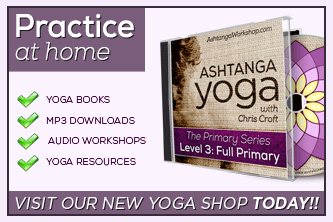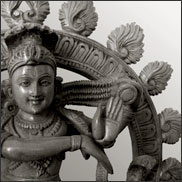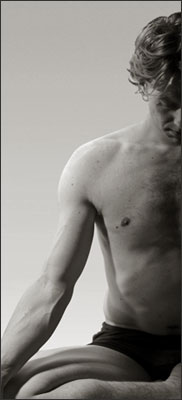Tristana
Ashtanga Yoga utilizes a three-fold approach to yogasana called Tristana. Tristana consists of Ujjayi Pranayama (breathing technique), Bandhas (energy locks or seals), Dristi (looking focus). Through this method practitioners develop control of the senses and a deep awareness of themsleves and their inner sensations, emotions and workings of the mind. By maintaining this discipline with regularity and devotion Ashtanga Viyasa Yoga practitioners develop steadiness of body and mind.
The process of using these tools to deepen your experience is one of the main characteristics that separate Ashtanga Vinyasa Yoga from other yoga forms
Ujjayi Pranayama
Prana means “energy.” Pranayama is the method of gaining control over the subtle energies in the body by using the breath. This particular pranayama involves partially closing off the glottis (the muscle at the back of the throat used for swallowing) as you inhale and exhale. To practice it tighten the throat in the same way as when you whisper, or in the same way you would steam up a mirror, and breath through the nose to make a whispering sound at the back of the throat. The sound should be similar to waves rolling over pebbles on a beach. Guruji says: "Ashtanga practice is a breathing practice ... the rest is just bending".
Bandhas
The word bandha means “lock” or “seal” and refers to the activation of certain isolated muscle groups that act to control the flow of life force energy (prana) around the body during practice. There are three of these locks, although only two are implemented during the asana practice. When mastered, the bandhas have the effect of retaining the prana that is created in the practice and channelling it around the body to cleanse and energise the system.
Uddiyana bandha (the belly lock) is located about 2 inches below the belly button. This bandha is engaged when this area is drawn towards the spine whilst retaining a soft upper abdomen (the area above the belly button). This action of lifting through the lower belly helps maintain a strong inner core and brings lightness and grace to the asana.
Mula bandha (the root lock) is located at the base of the spine and can best be understood by a firm lifting of the pelvic floor (at the perineum). To begin with engaging this bandha feels like a clenching of the anus, but in time and with practice this becomes a gentle lifting of the pelvic floor.
Jalandhara bandha (the chin lock) is performed by extending the chin forward and drawing it back toward the throat where the clavicle bones meet. This bandha is not used in the physical practice of asana.
Drishti
This is your point of focus and should be used to assist in drawing your awareness inward. The drishti varies from posture to posture and will be discussed further as we move through the series. If you are practicing on your own and are unsure of the drishti for a certain pose, it is safe to focus your gaze in the direction the pose is moving (i.e. when lifting the arms overhead you look to the hands).
Vinyasa
The word Vinyasa refers to the practice of breath synchronised movement. Opening and expanding movements are made on inhales and contracting, folding movements, or changes of position are made on exhales. The correct use of the vinyasa will facilitate a deeper experience of each pose, while at the same time also encourage a fuller and deeper breath.
The result is that asanas become linked together on the thread of breath; the practice becomes effortless and graceful, like a rhythmical dance where the music is the whispering of the Ujjayi breath. Vitally vinyasa also creates heat within the body, increases blood circulation and flushes toxins from the system through the sweat.





